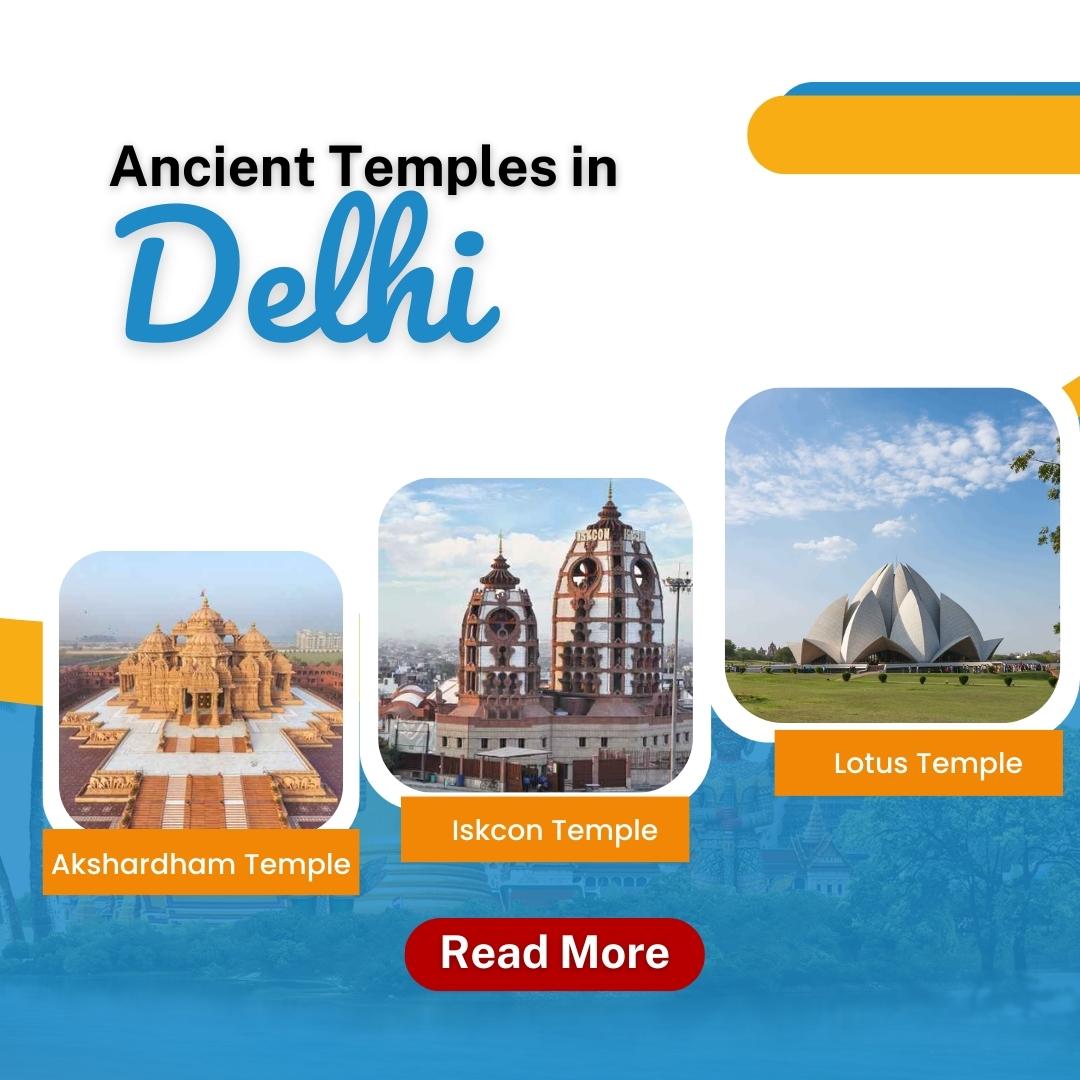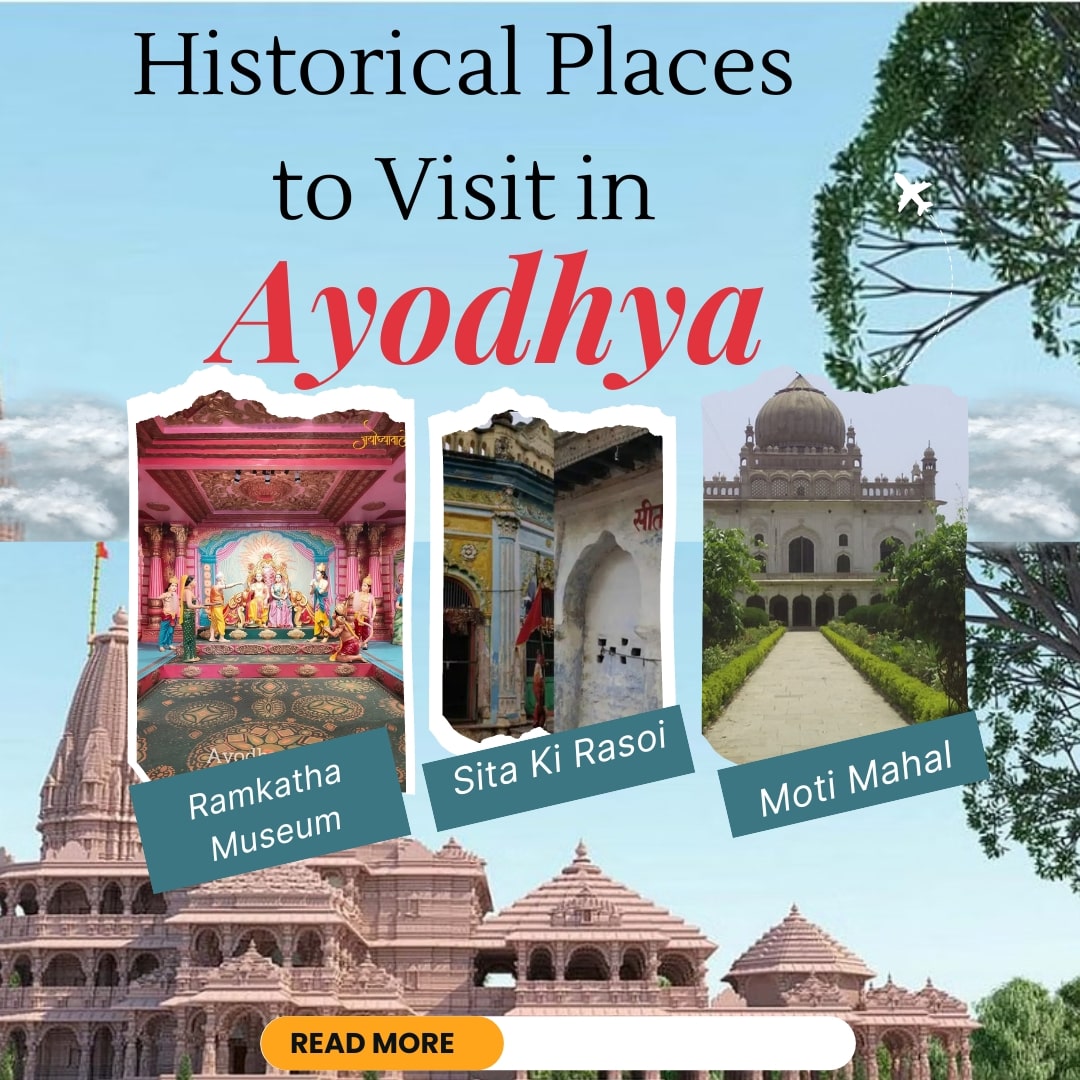
Ayodhya is a holy city located in the northern Indian state of Uttar Pradesh. The city has a rich and significant history, being one of the seven most sacred cities for Hindus. Ayodhya is the birthplace of Lord Rama, the seventh avatar of Lord Vishnu, and as such, holds immense importance for the Hindu community.
In this article, we will take a closer look at the different places to visit in Ayodhya that are of religious, historical, natural, cultural, and offbeat significance.
Religious Places to Visit in Ayodhya
Ram Janmabhoomi Temple – This temple is situated at the site where Lord Rama is believed to have been born. The temple was in the news for many years due to the Ram Janmabhoomi-Babri Masjid dispute, which was finally resolved by the Indian Supreme Court in 2019.
Hanuman Garhi – This temple is dedicated to Lord Hanuman, who is revered by Hindus for his strength and devotion to Lord Rama. The temple is located on a hill and is believed to have been built by a queen of the Nawab of Awadh.
Kanak Bhawan Temple – This temple is dedicated to Lord Rama and his wife Sita. The temple is believed to have been gifted to Sita by her mother, and the name Kanak Bhawan means “the house of gold.”
Nageshwarnath Temple – This temple is dedicated to Lord Shiva and is believed to have been built by Lord Rama’s younger brother, Lord Laxman.
Laxman Qila – This fort is believed to have been built by Lord Laxman, and it is said that he used to stay here with his wife, Urmila, during Lord Rama’s exile.

Historical Places to Visit in Ayodhya
Moti Mahal – This palace was built by the Nawabs of Awadh and is located near the Ramkatha Park. The palace has beautiful architecture and is known for its intricate carvings.
Guptar Ghat – This ghat is believed to have been the spot where Lord Rama used to take a dip in the river Saryu during his exile. The ghat is named after Lord Rama’s younger brother, Lord Laxman.
Sita Ki Rasoi – This is believed to be the kitchen where Sita used to cook for Lord Rama during their exile. The kitchen has a statue of Sita and utensils that are said to be thousands of years old.
Ramkatha Park – This park has a beautiful statue of Lord Rama, along with other statues depicting scenes from the Ramayana.
Ramkatha Museum – This museum has a collection of artifacts and paintings related to the Ramayana.

Natural Places to Visit in Ayodhya
Ramkatha Park – This park has a beautiful garden and a pond, and is a great place to relax and take in the scenery.
Faizabad Gardens – These gardens are located near the Ayodhya railway station and have beautiful flowers and trees.
Ayodhya Ghats – These ghats are located on the banks of the river Saryu and are a popular spot for taking a dip in the holy river.
Treta Ke Thakur – This temple is located in a cave and is believed to be the spot where Lord Rama used to meditate.
Amawan Temple – This temple is located in a forest and is believed to be the spot where Lord Rama used to play with his brothers during their exile.
Cultural Places to Visit in Ayodhya
Ramkatha Park – In addition to its natural beauty, Ramkatha Park is also a cultural hub. The park hosts various cultural events, including Ram Leela performances during the festival of Dussehra.
Ramkatha Mandap – This mandap is a beautiful structure located in the heart of Ayodhya. It is believed to be the spot where Lord Rama’s coronation ceremony took place, and is a popular spot for performing puja.
Ayodhya Art Gallery – This gallery has a collection of paintings, sculptures, and other art pieces related to the Ramayana.
Hanuman Chatti – This chatti is a popular spot for buying souvenirs related to Lord Hanuman and Lord Rama. It is a great place to pick up gifts for friends and family back home.
Rang Mahal – This palace was built by the Nawabs of Awadh and is a fine example of the blend of Hindu and Islamic architecture.
Offbeat Places to Visit in Ayodhya
Bahu Begum ka Maqbara – This maqbara is the tomb of Bahu Begum, the wife of the Nawab of Awadh. The maqbara is a beautiful structure with intricate carvings and is worth a visit for its historical significance.
Ramkatha Sthal – This spot is believed to be the place where Lord Rama used to narrate the story of the Ramayana to his devotees. It is a peaceful spot and a great place to meditate.
Tulsidas Samadhi Sthal – This spot is the final resting place of Goswami Tulsidas, the author of the Ramcharitmanas, a popular retelling of the Ramayana.
Raja Mandir – This temple is dedicated to Lord Rama and is believed to have been built by the king of Ayodhya. The temple has beautiful architecture and is a great spot for photography.
Ram Janaki Temple – This temple is dedicated to Lord Rama and his wife Sita, and is believed to have been built by the queen of the Nawab of Awadh. The temple has a beautiful courtyard and is a great spot for taking in the peaceful surroundings.
Conclusion
Ayodhya is a city steeped in history and culture, with a rich spiritual legacy that has drawn devotees from all over the world for centuries. From religious and historical sites to natural beauty and cultural hotspots, there is something for everyone in Ayodhya. Whether you are a devotee seeking spiritual enlightenment or a traveler looking for a unique cultural experience, a visit to Ayodhya is sure to leave you with memories that will last a lifetime.














